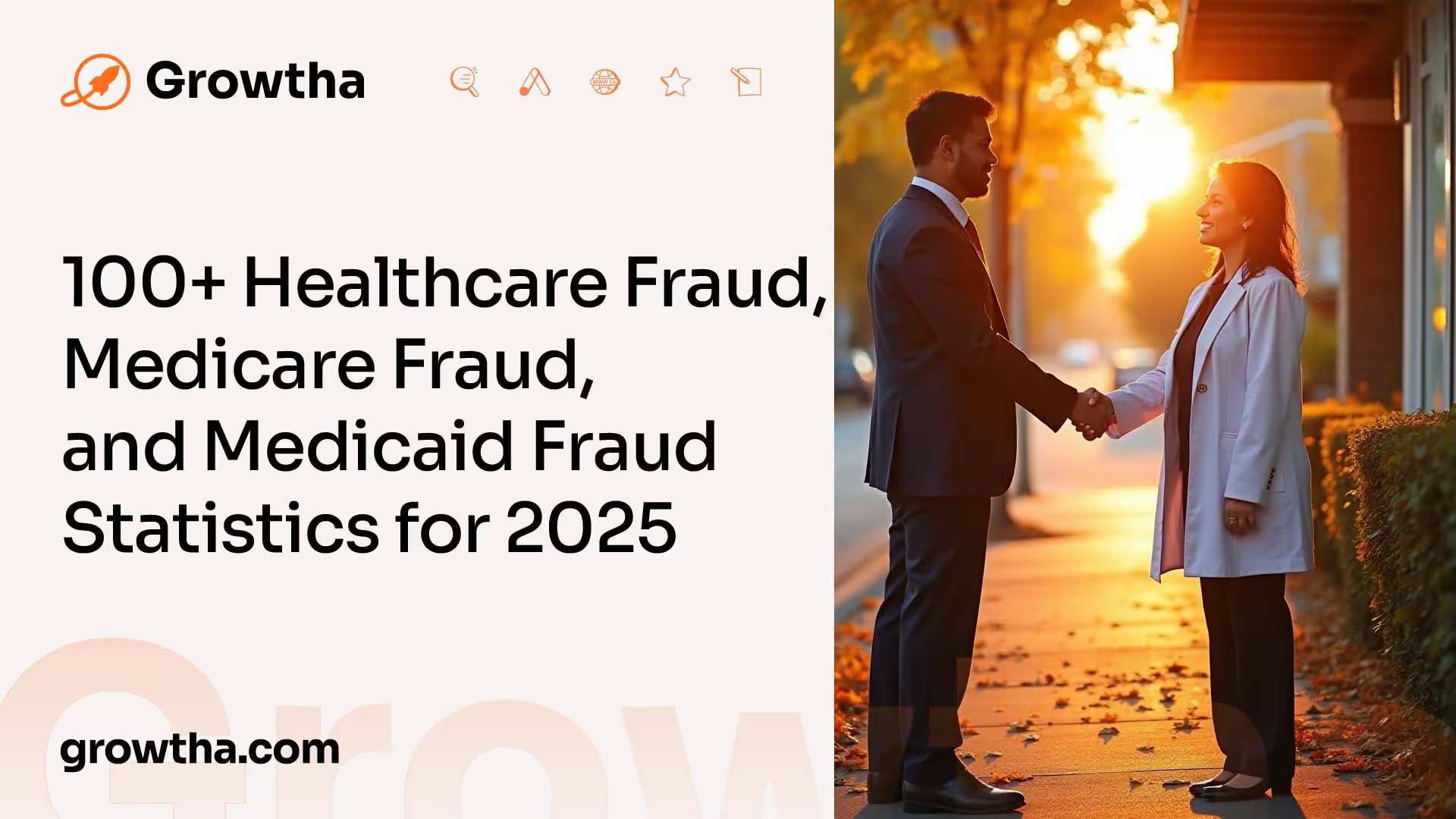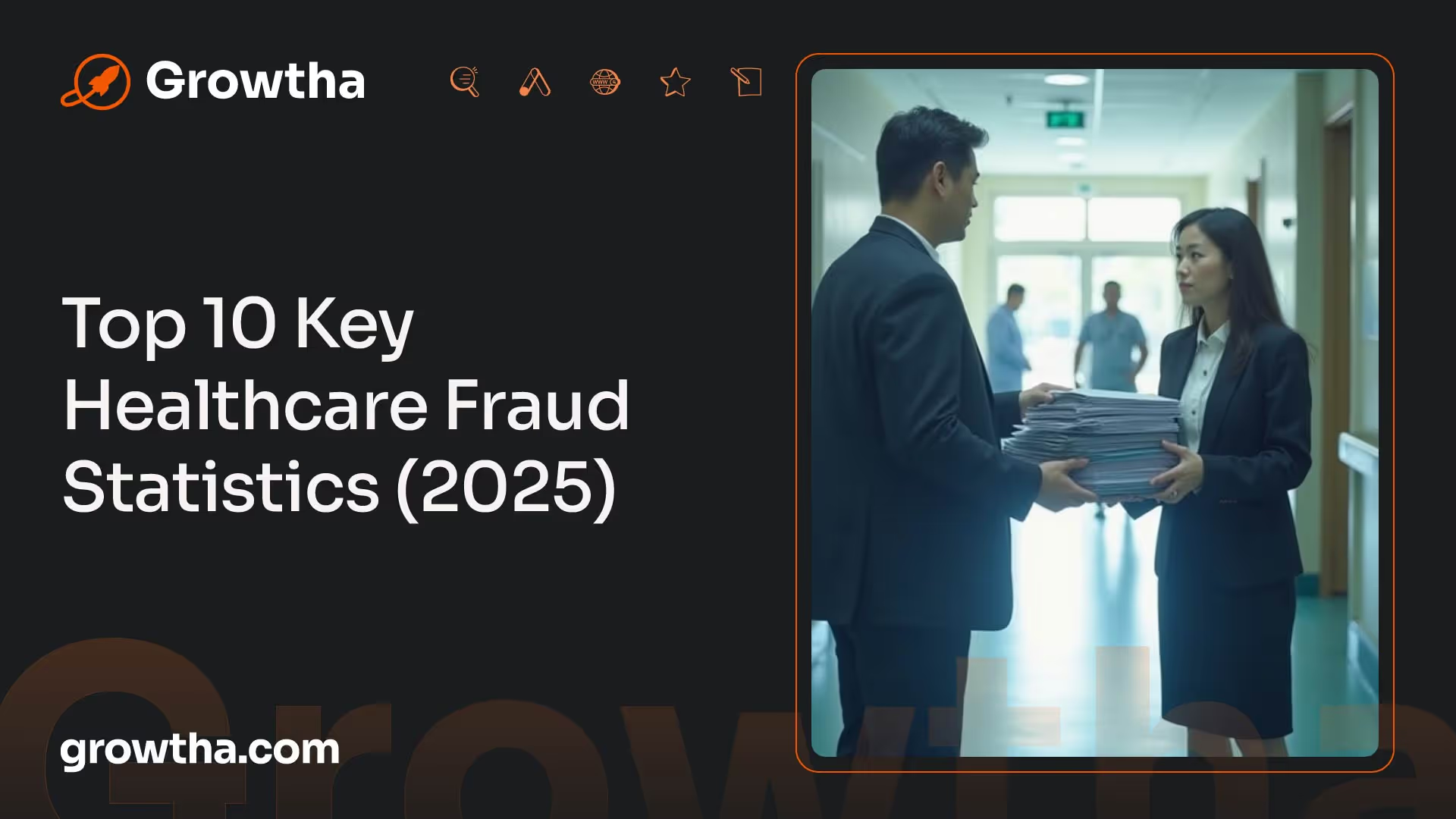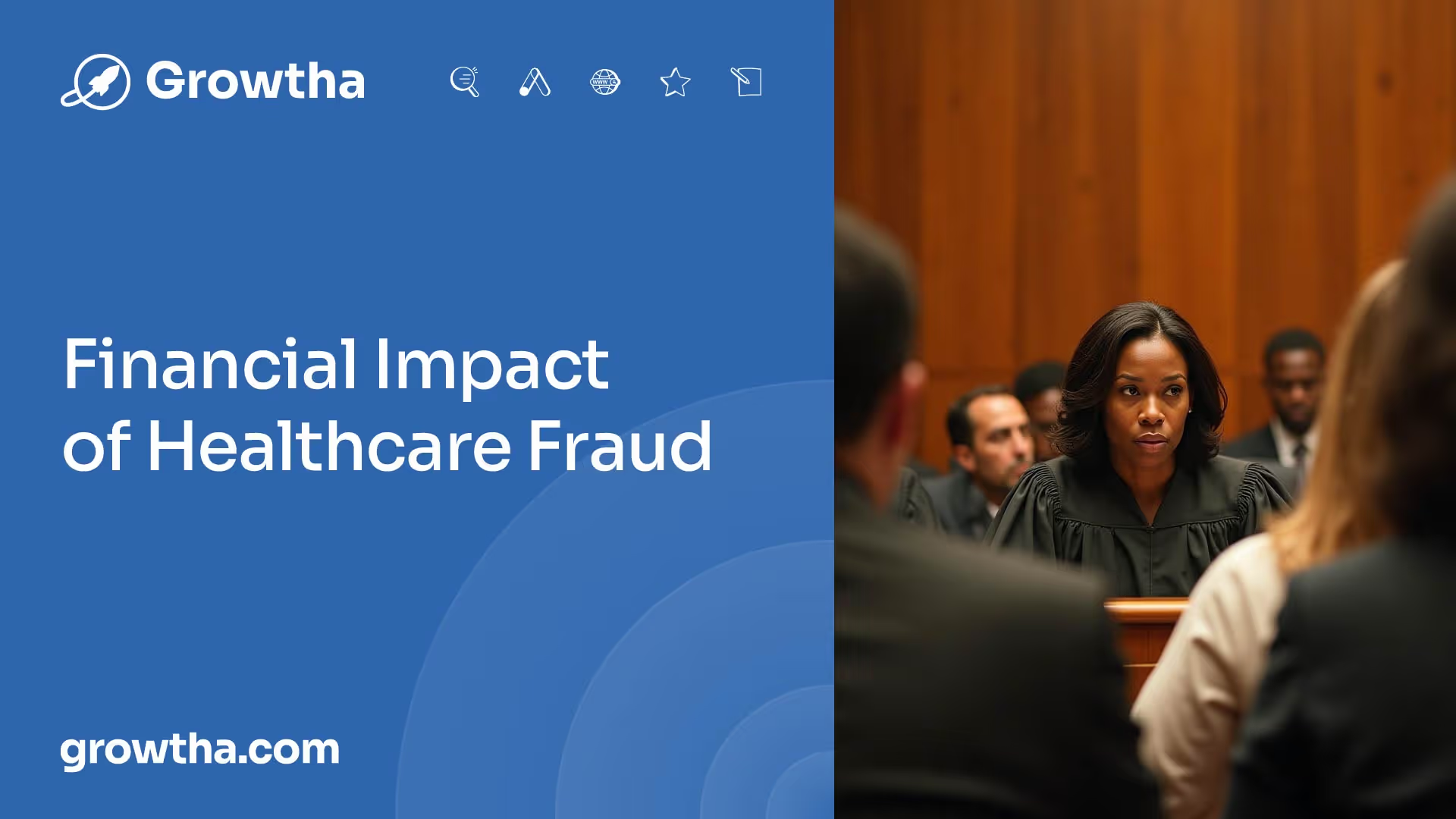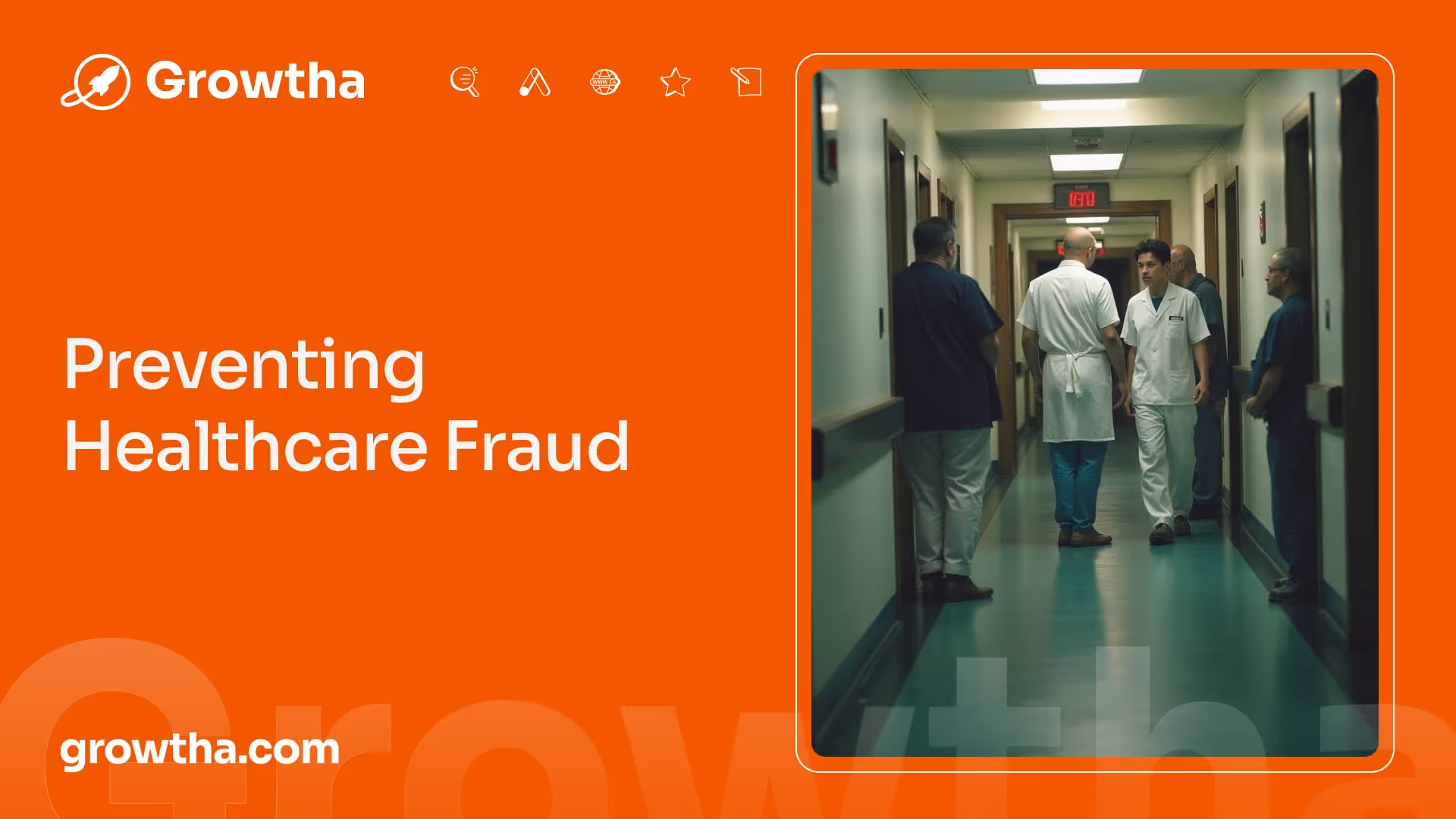100+ Healthcare Fraud, Medicare Fraud, and Medicaid Fraud Statistics for 2025
Healthcare fraud remains a significant concern in the United States, costing billions of dollars each year. These healthcare statistics will blow your mind, keep reading.


100+ Healthcare Fraud, Medicare Fraud, and Medicaid Fraud Statistics for 2025

Top 10 Key Healthcare Fraud Statistics (2025)
- Healthcare fraud costs the U.S. approximately $100 billion annually.
- An estimated 10% of all healthcare spending is lost to fraud each year.
- Medicare fraud accounts for $60 billion in annual losses, making it one of the largest contributors to healthcare fraud.
- Medicaid fraud results in approximately $30 billion in fraudulent claims each year.
- The Department of Justice recovered over $2.5 billion in healthcare fraud settlements in 2024.
- 25% of healthcare fraud cases involve kickbacks or illegal referrals.
- Fraudulent billing practices contribute to over 40% of healthcare fraud cases.
- Medical identity theft affects over 2.3 million Americans annually, with losses exceeding $40 billion.
- Telehealth fraud increased by 75% between 2020 and 2024 as remote care services expanded.
- The average prison sentence for healthcare fraud offenders is 4.5 years.
Healthcare Fraud Statistics
Healthcare fraud is a widespread issue that affects both public and private healthcare systems. Fraudulent activities range from false billing to identity theft, resulting in severe financial and legal consequences.
General Healthcare Fraud Facts
- Healthcare fraud cases increased by 18% in 2024 compared to the previous year.
- The most common type of healthcare fraud involves upcoding, where providers bill for more expensive services than those actually performed.
- Home healthcare fraud accounts for over 20% of fraud cases due to improper billing.
- The healthcare sector is the second most targeted industry for cyberattacks, with stolen medical records selling for up to $1,000 on the dark web.
- Fraudulent claims submitted by organized crime rings make up 15% of healthcare fraud cases.
Telehealth Fraud Statistics
- Telehealth fraud skyrocketed by 75% between 2020 and 2024 due to the increased reliance on virtual care services.
- Fake telemedicine consultations contributed to over $1 billion in fraudulent claims in 2024 alone.
- Fraudulent telehealth claims often involve ghost patients, where services are billed for individuals who never received care.
Medicare Fraud Statistics
Medicare fraud disproportionately impacts senior citizens and involves practices like billing for unnecessary procedures, phantom billing, and patient exploitation.
Key Medicare Fraud Data
- Medicare fraud resulted in over $60 billion in financial losses in 2024.
- Approximately 14% of Medicare payments are flagged for suspicious activity each year.
- Fraudulent claims for durable medical equipment (DME) account for one-third of Medicare fraud cases.
- In 2024, the DOJ prosecuted 78 healthcare providers for Medicare fraud, totaling over $200 million in fines.
- Fraudulent hospice care billing is one of the fastest-growing Medicare scams, increasing by 22% in 2024.
Common Medicare Fraud Schemes

- Billing for services not provided
- Unnecessary medical tests or equipment
- Kickbacks to physicians for patient referrals
- Falsifying patient diagnoses to justify expensive treatments
Medicaid Fraud Statistics
Medicaid fraud impacts low-income families, individuals with disabilities, and vulnerable populations. Fraudulent Medicaid claims often involve falsified eligibility information, unqualified providers, or inflated billing.
Key Medicaid Fraud Data

- Medicaid fraud cost taxpayers over $30 billion in 2024.
- An estimated 8% of Medicaid claims are deemed improper payments due to fraudulent practices.
- The top Medicaid fraud cases involve prescription drug scams, particularly opioids and controlled substances.
- Medicaid fraud in managed care settings has increased by 30% in the past five years.
- The most common Medicaid fraud schemes include phantom billing and billing for medically unnecessary services.
Prescription Drug Fraud Statistics
- Over 20% of Medicaid fraud cases involve opioid overprescription or fraudulent drug claims.
- "Doctor shopping" — where patients visit multiple doctors for the same prescription — contributes to widespread Medicaid prescription fraud.
- Fraudulent pain management clinics, known as pill mills, are responsible for millions in Medicaid losses each year.
Financial Impact of Healthcare Fraud

- Fraudulent healthcare claims account for nearly $1 in every $10 spent on healthcare.
- The U.S. government recovered over $3 billion in fraudulent healthcare payments in 2024.
- The Centers for Medicare & Medicaid Services (CMS) allocates $500 million annually for fraud prevention efforts.
- Healthcare fraud whistleblowers are awarded 15-30% of recovered funds under the False Claims Act.
Preventing Healthcare Fraud

For Patients
- Review medical statements regularly for suspicious charges.
- Protect your Medicare and insurance card like a credit card.
- Report suspected fraud immediately to your healthcare provider or the Office of Inspector General (OIG).
For Healthcare Providers
- Implement compliance programs that adhere to CMS guidelines.
- Conduct routine internal audits to identify potential fraud risks.
- Train staff to recognize and prevent fraudulent practices.
Key Takeaways
- Healthcare fraud continues to pose significant risks, costing billions annually.
- Medicare and Medicaid fraud are primary contributors, with durable medical equipment (DME) and prescription drug scams driving financial losses.
- Preventive measures, such as enhanced compliance programs, audits, and consumer awareness, are vital for reducing healthcare fraud.
References
- https://www.ussc.gov/sites/default/files/pdf/research-and-publications/quick-facts/Health_Care_Fraud_FY23.pdf
- https://www.justice.gov/archives/jm/criminal-resource-manual-976-health-care-fraud-generally
- https://www.justice.gov/archives/opa/pr/national-health-care-fraud-enforcement-action-results-193-defendants-charged-and-over-275-0
- https://www.northwestcareercollege.edu/blog/what-is-healthcare-fraud-and-how-common-is-it/
- https://oig.hhs.gov/reports/all/2024/health-care-fraud-and-abuse-control-program-report-fiscal-year-2023/







